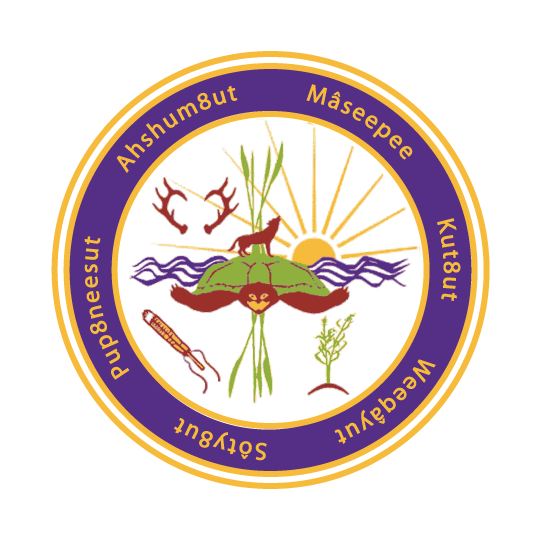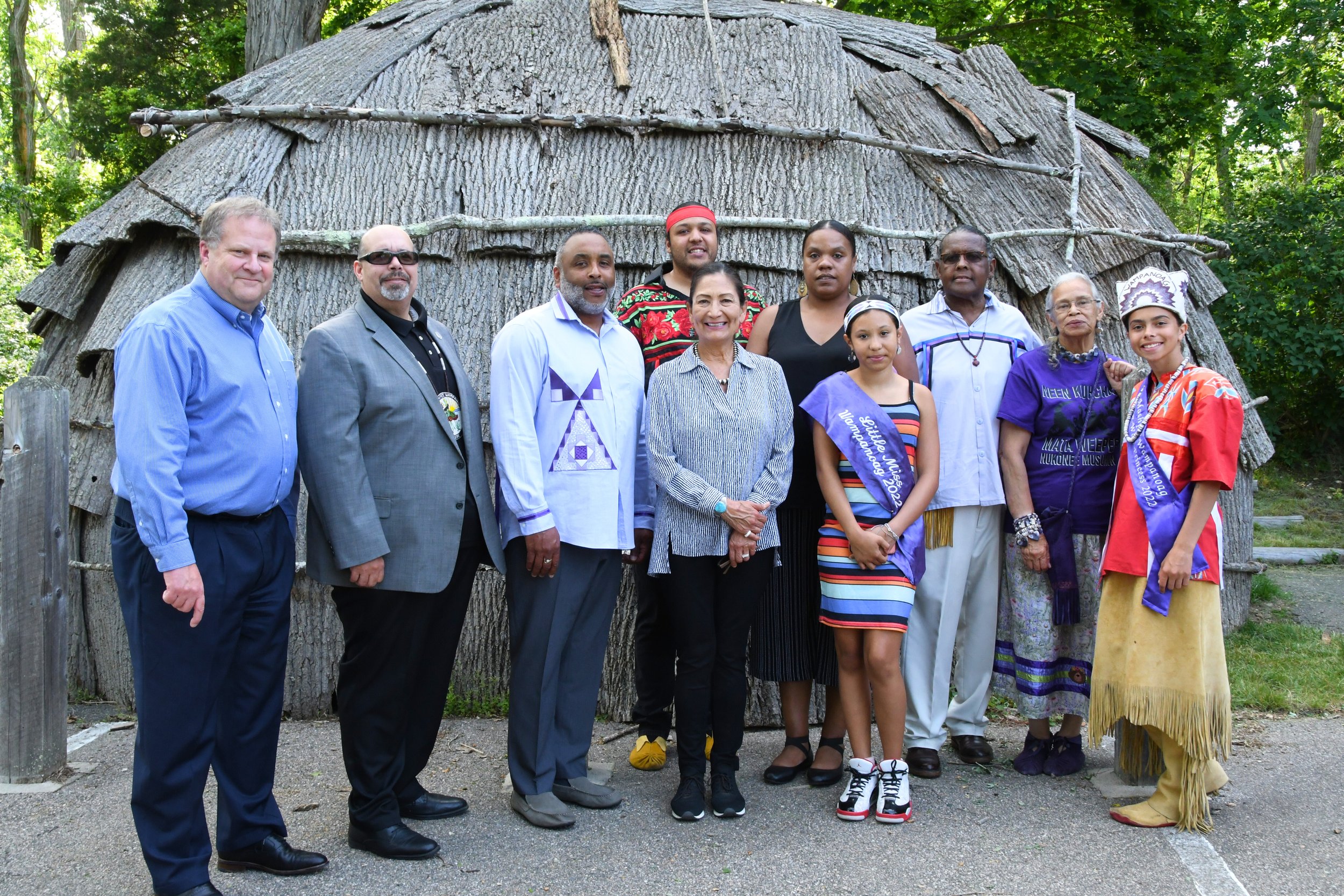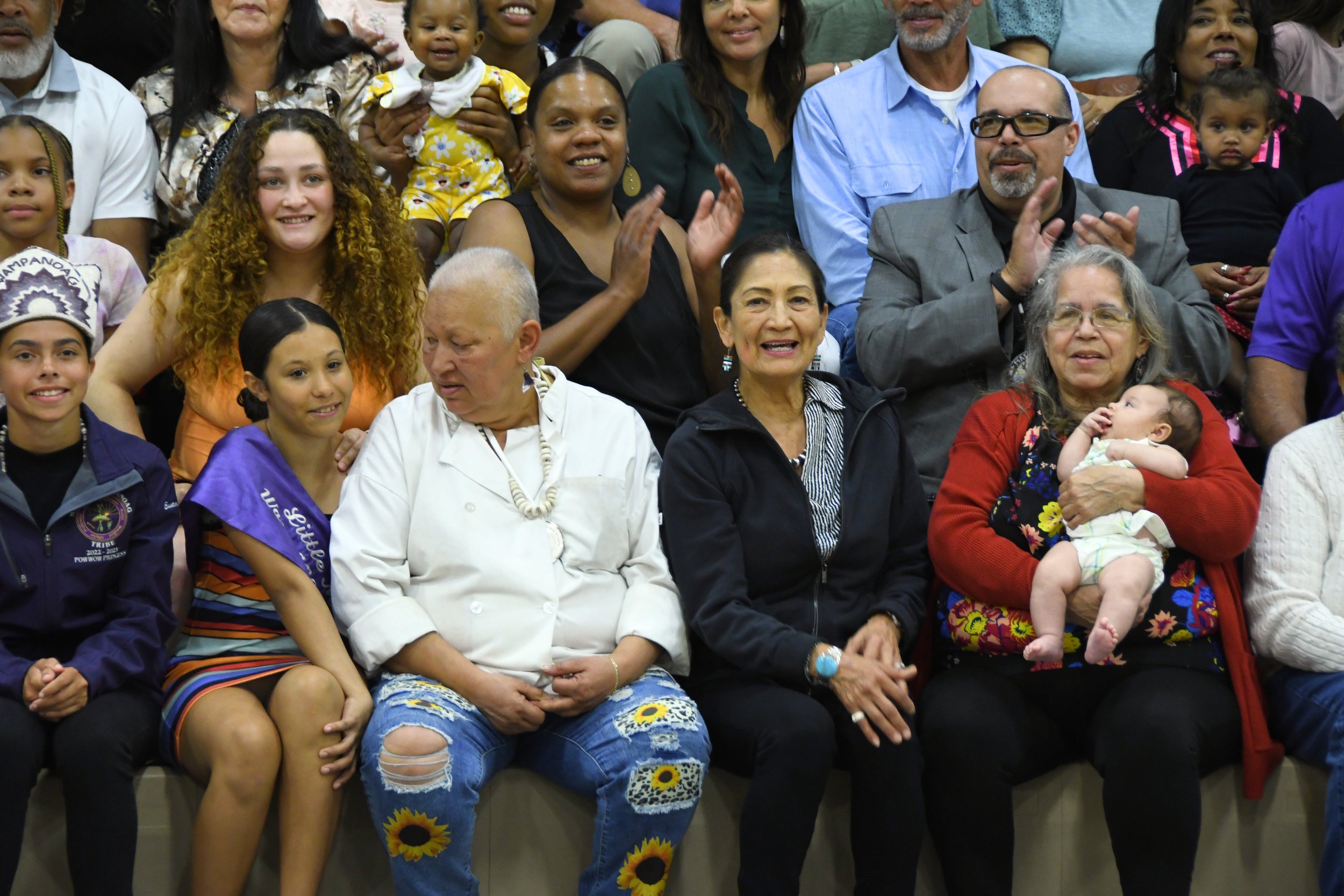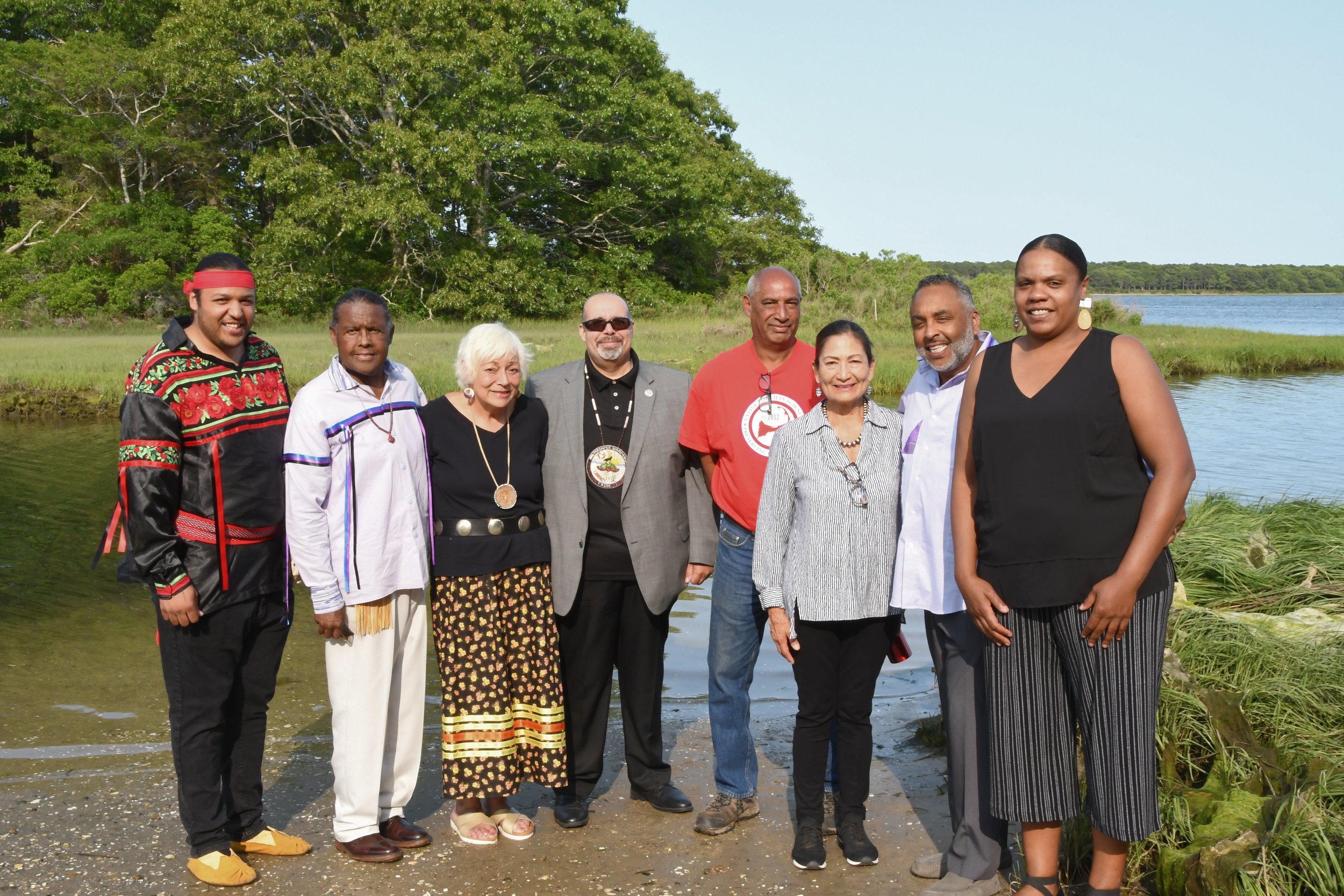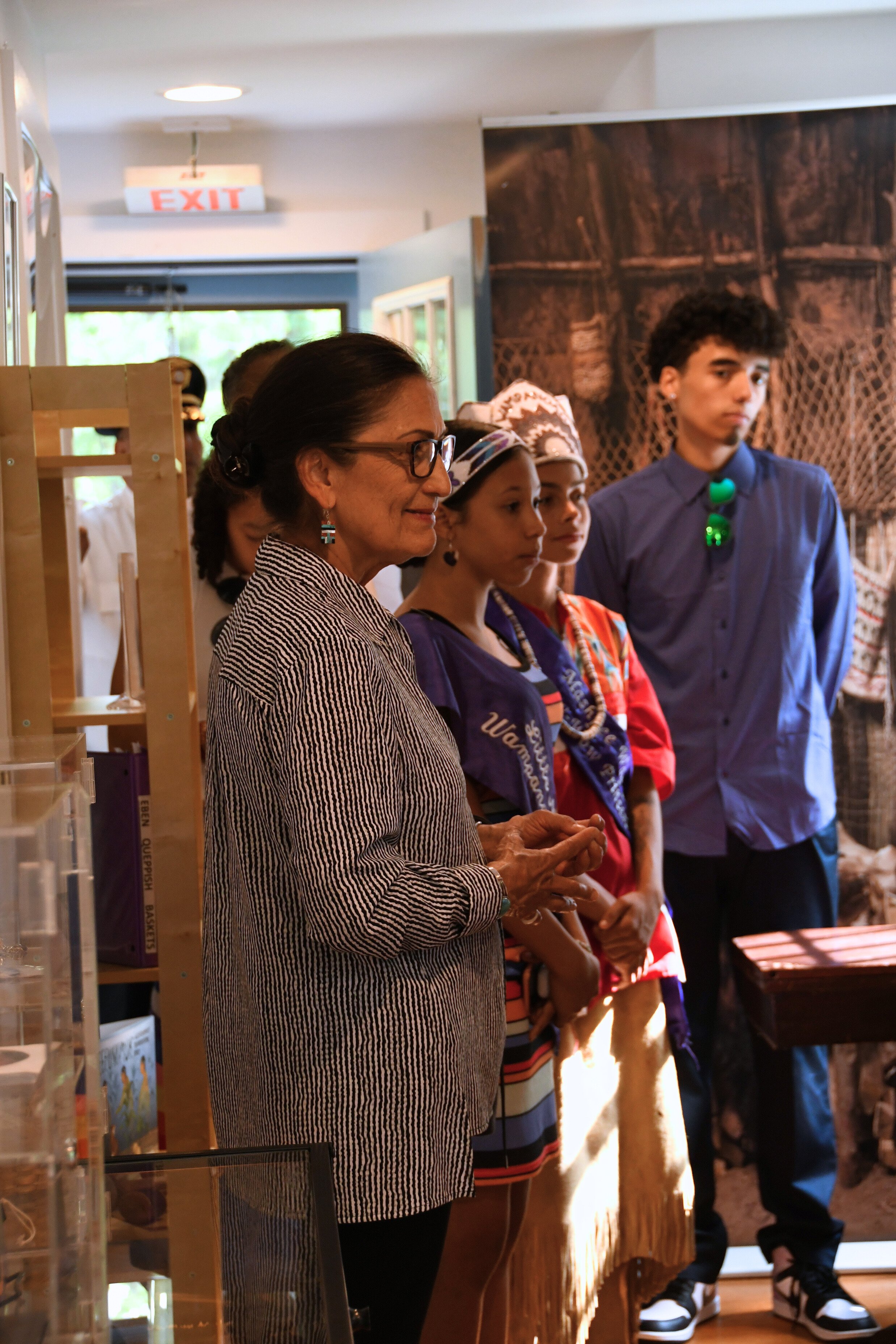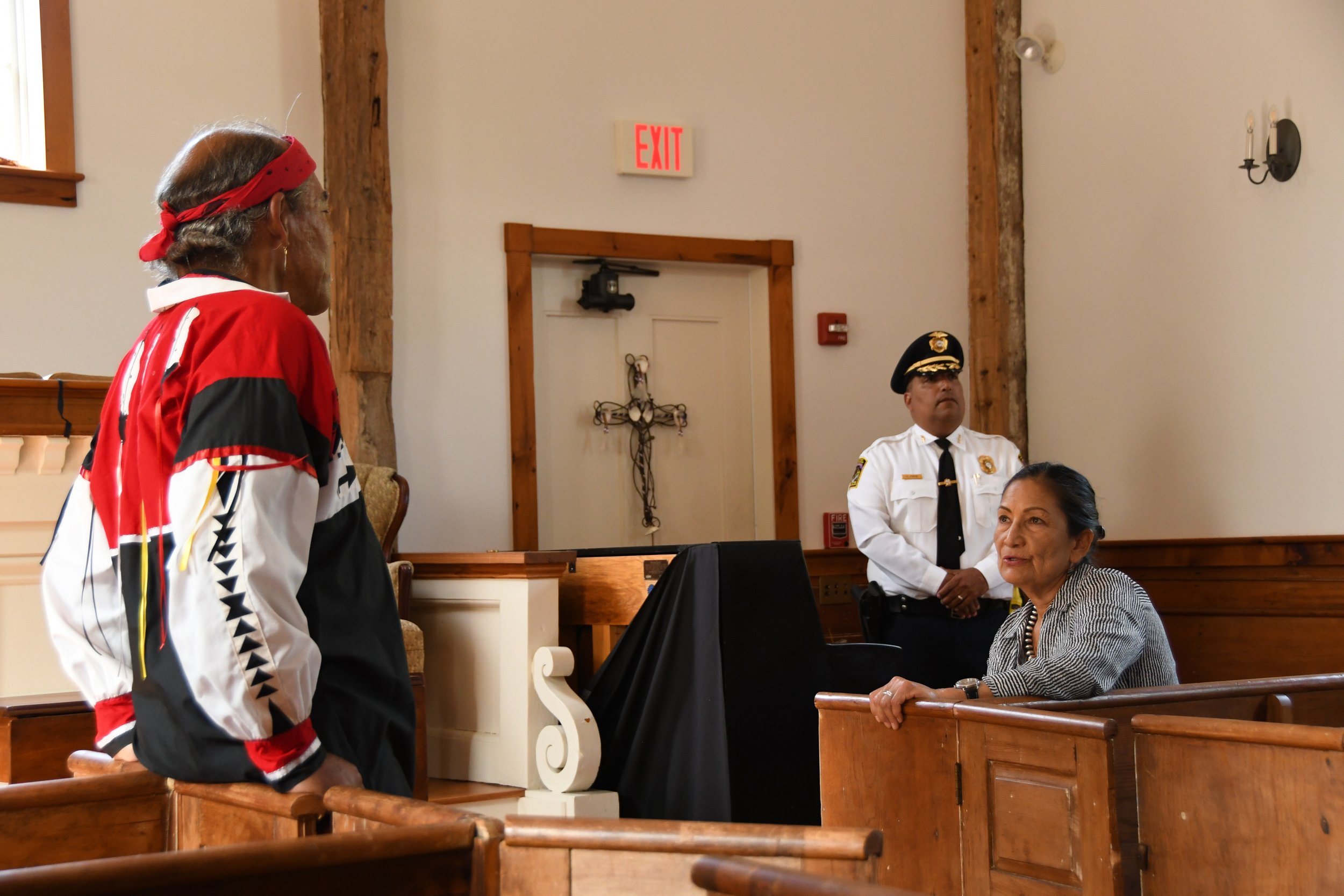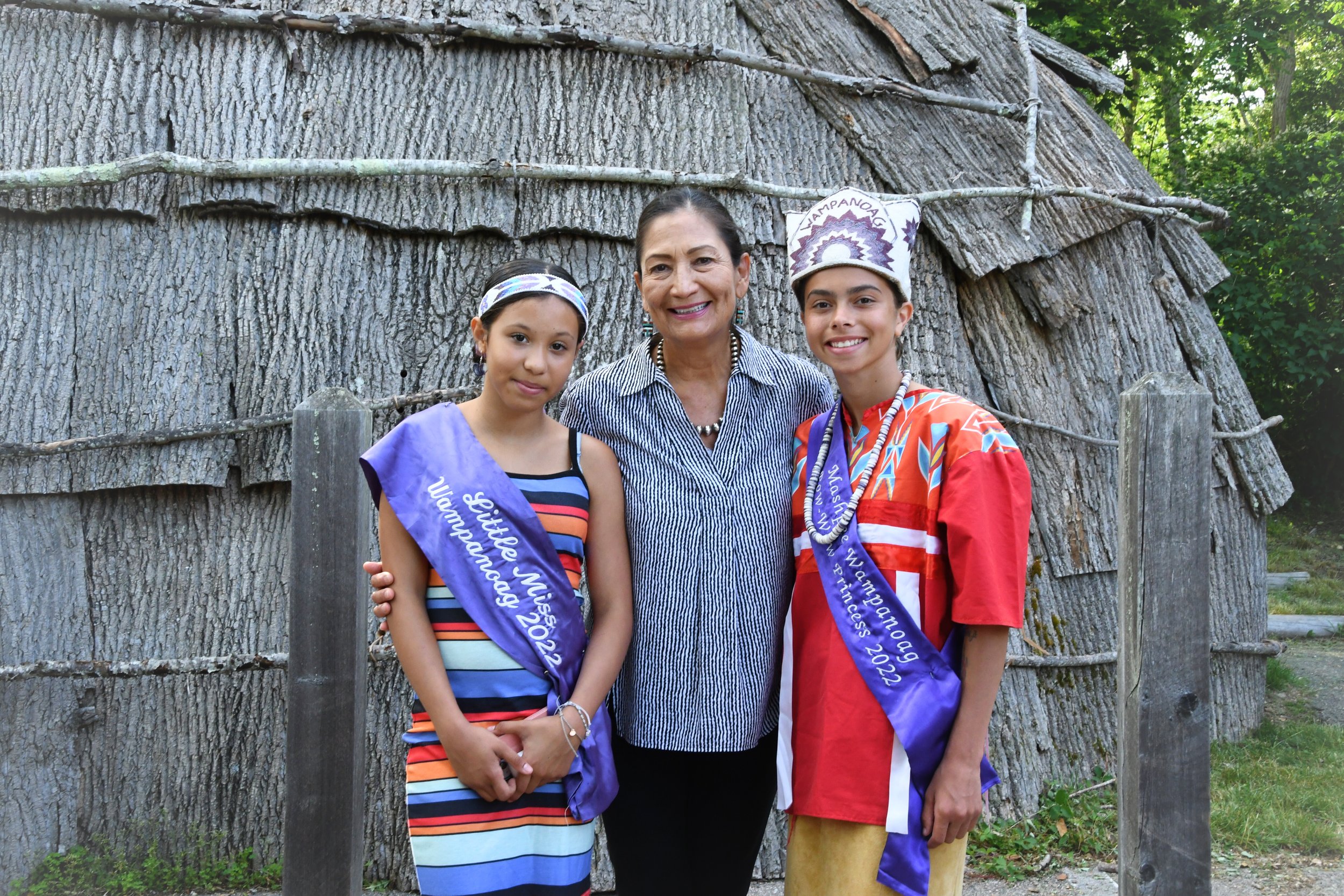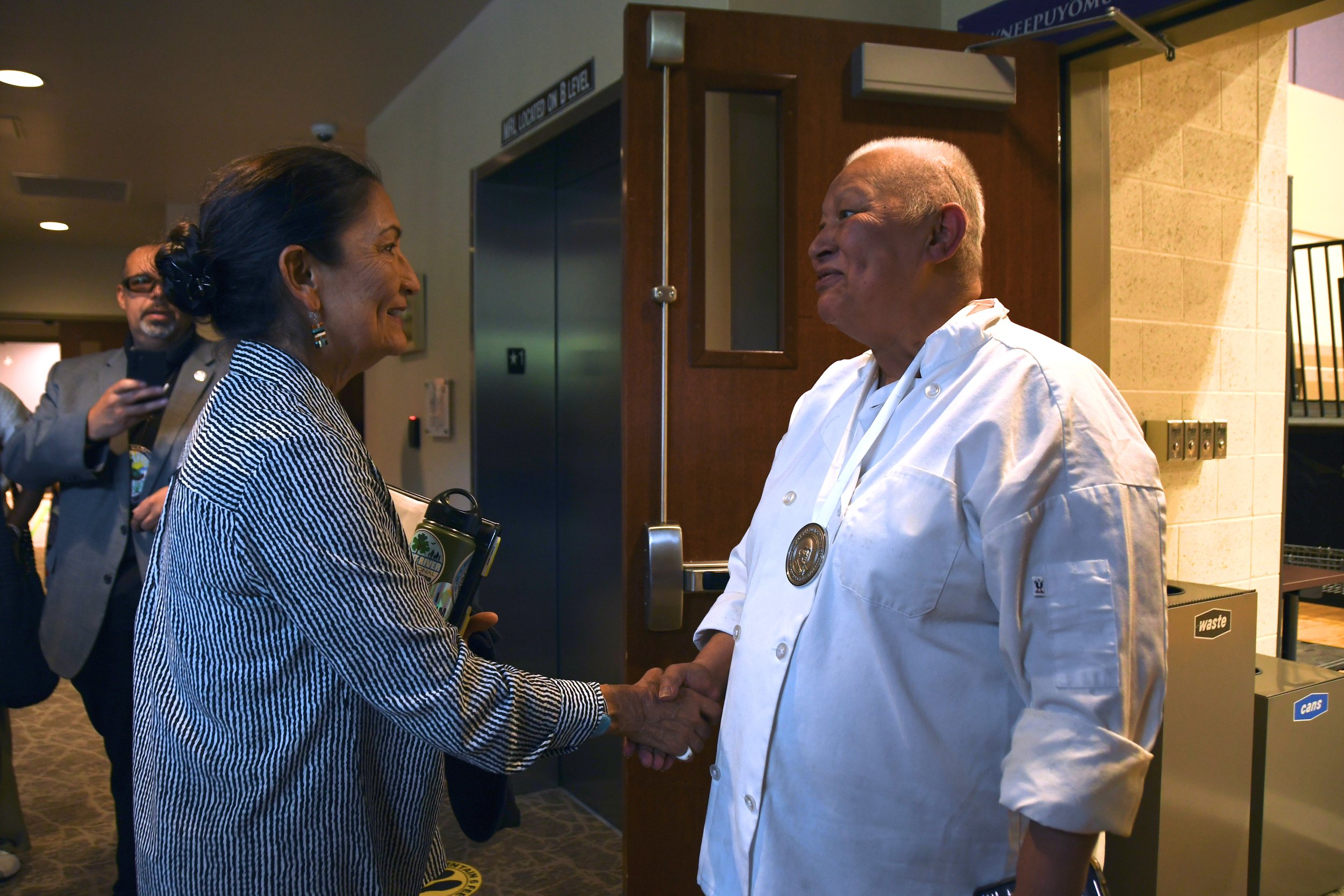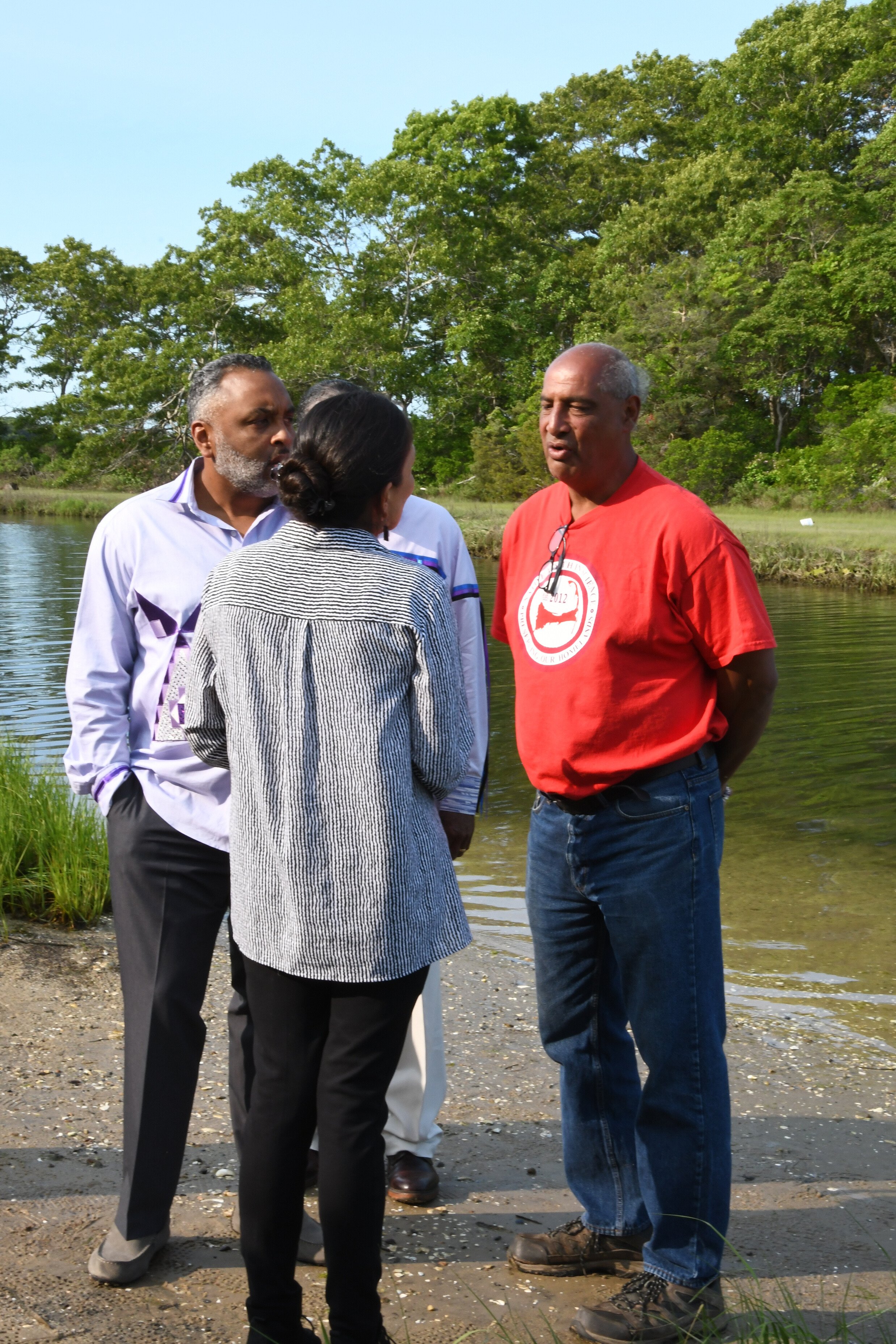As inter-tribal drummers and singers sang an honor song at the Mashpee Wampanoag Tribal Government Center Thursday, U.S. Secretary of the Interior Deb Haaland stood somber among roughly 150 Wampanoag tribal citizens.
"I'm honored to be here with all of you. Thank you for inviting us, thank you for hosting us, and thank you for being such beautiful people," said Haaland.
Haaland is one of the first Native American women to serve in Congress and is the first Native American to serve as a cabinet secretary. During her time in Congress, she focused on environmental justice, climate change, missing and murdered Indigenous women, and family-friendly policies, according to the U.S. Department of Interior website. Haaland is a member of the Pueblo of Laguna Tribe.
Before spending time with tribal citizens during a traditional Native American social, Chairman Weeden said Haaland met with members of the Mashpee Wampanoag Tribal Council, and took a tour of the Mashpee Wampanoag Museum, the Old Indian Meetinghouse, and Punkhorn Point in Popponesset Bay.
She spoke with tribal leaders like Mashpee Wampanoag Chief Earl "Chiefie" Mills, Jr. - who was raised May 6 - Chief Earl Mills Sr., and Sagamore Vernon “Buddy” Pocknett. Earlier in the day, said Weeden, Haaland also visited the Wampanoag Tribe of Gay Head (Aquinnah), and headed to Rhode Island Friday to spend time with the Narragansett Indian Tribe.
"She's trying to get to know Northeastern tribes more," said Weeden.
During the visit, Sherry Pocknett was also recognized and honored by tribal citizens for winning a James Beard Foundation Award for Best Chef Northeast on June 5, for the Indigenous cuisine she serves at Sly Fox Den Too in Charlestown, Rhode Island.
During Haaland's roughly two-hour meeting with the tribal council, Haaland became emotional when the group talked about aboriginal rights and water quality issues throughout Mashpee and Cape Cod, according to Weeden
"We are working very hard for tribes across the country," said Haaland, as she exited her meeting with the tribal council. "We are going to go back and work hard on these issues that are so important to you." Weeden said he also met with Haaland several weeks ago to talk about offshore wind issues, along with a coalition of Eastern tribes from Maine to Virginia.
A meeting with the U.S. Department of the Interior has been sought, Weeden said.
"We have been asking for some meaningful consultation," he said. "So it was meaningful that she came to Mashpee. We are glad the community, including our youth and our elders, came together and took part." Tribal councilman David Weeden said Haaland made the issues facing the Wampanoag tribe personal, and understood conditions impacting tribal citizens and the environment. "We made mention that we are a regional partner and there are regional issues and concerns. We want to work with all parties both local, state and federal to accomplish and try to improve and make strides in some of those areas," said David. "She was amicable to that. She was personable, and passionate about her work."
The importance of having a Native American person as U.S. Secretary of the Interior
Haaland is also a former tribal administrator, said David Weeden, and she understands how a lack of funding can impact a variety of programming.
Haaland served as a tribal administrator at San Felipe Pueblo, and became the first woman elected to the Laguna Development Corporation Board of Directors, overseeing business operations of the second largest tribal gaming enterprise in New Mexico, according to the Department of Interior website.
Because of the tribal dynamics involved with the job, the U.S. Secretary of the Interior position should always be filled with a Native American person, said David Weeden.
"She didn’t talk down to us. She came in and listened and that’s the ultimate sign of respect," he said. "She allowed the tribe to talk about what they needed to."
Emergency Management Director and tribal council member Nelson Andrews Jr. said Haaland held a true sense of caring for tribal communities. She recognized the tribe's loss of land throughout Wampanoag territory, said Andrews, and spoke about the fight for tribal sovereignty, and aboriginal rights.
"She said we have to continue to fight and move forward," he said. "And that the Department of the Interior will do as much as possible to work with us."
'She wasn't just going through the motions.'
Trish Keliinui, a member of the Mashpee Wampanoag Tribe, said it was an honor to have Haaland in Mashpee.
"She was on our soil, on our land, where our ancestors are," she said. "And she wasn't just going through the motions. It appears she had a good day and was comfortable. That makes me feel good."
Paula Peters, a member of the Mashpee Wampanoag Tribe, said Haaland's visit showed that Wampanoag people are important to her.
"Her coming here makes us shine a little brighter," said Peters.
Rachael Devaney writes about community and culture. Reach her at rdevaney@capecodonline.com. Follow her on Twitter: @RachaelDevaney.
